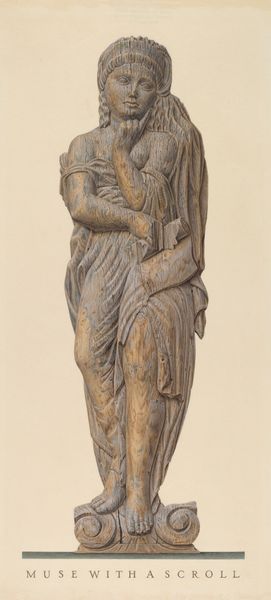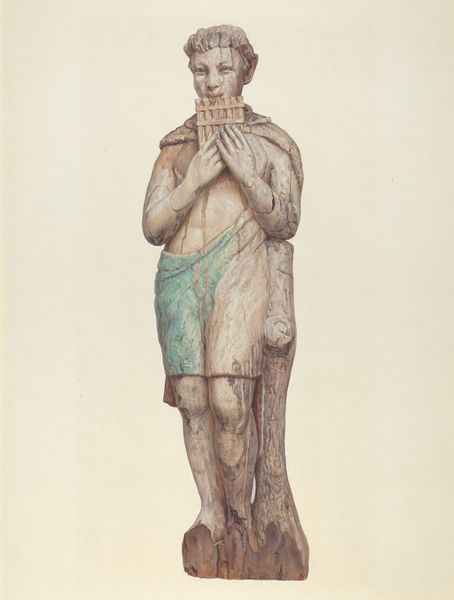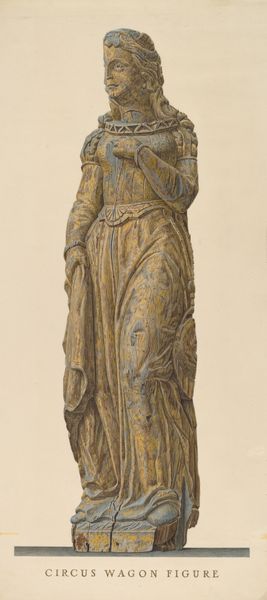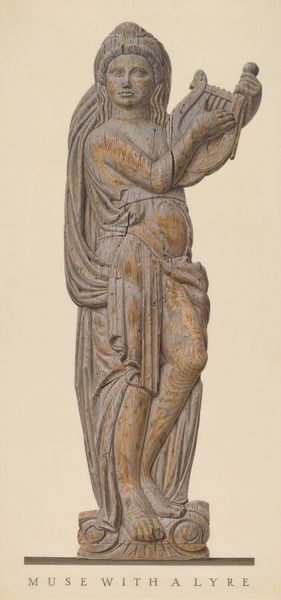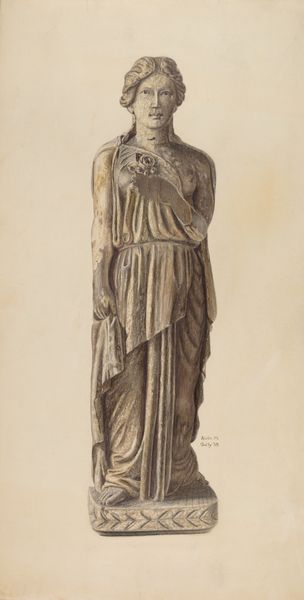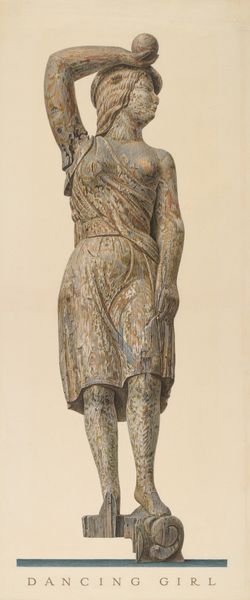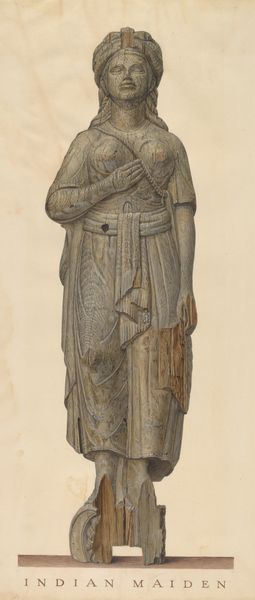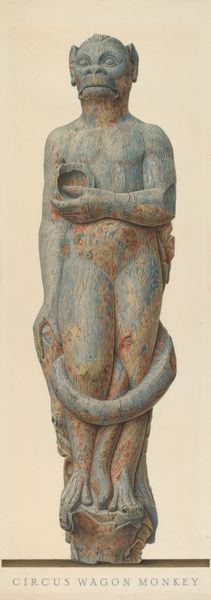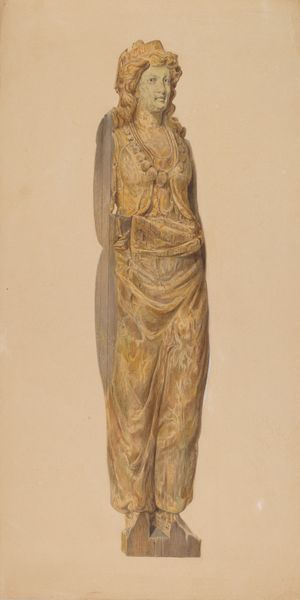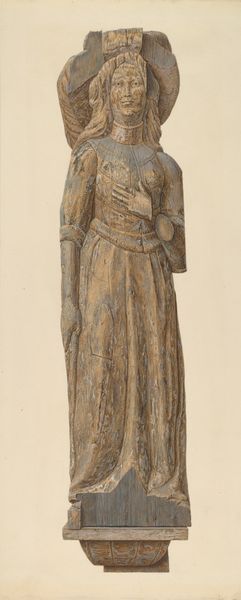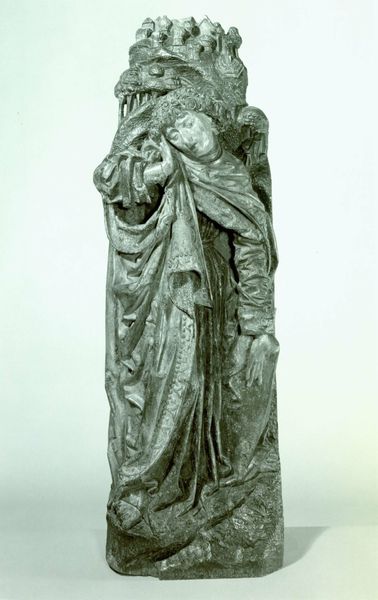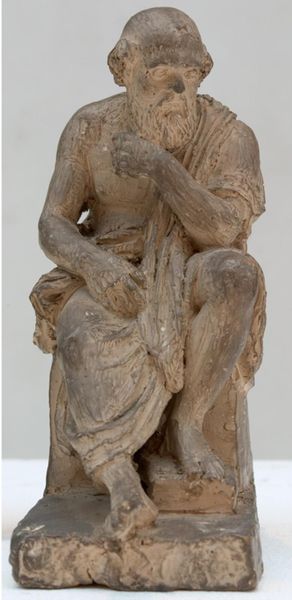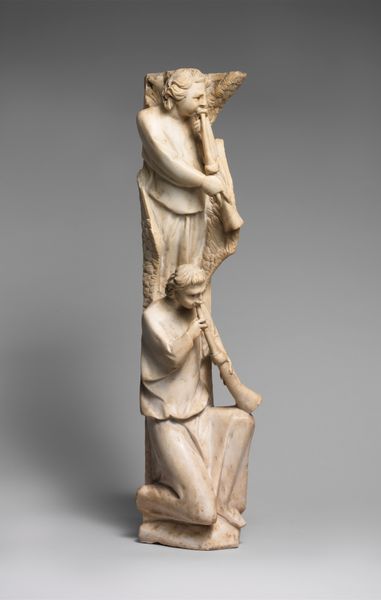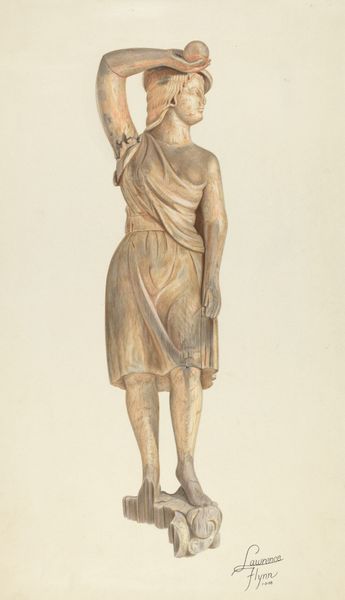
drawing, sculpture, wood
#
portrait
#
drawing
#
sculpture
#
figuration
#
folk-art
#
sculpture
#
wood
#
charcoal
#
realism
Dimensions: overall: 61.1 x 22 cm (24 1/16 x 8 11/16 in.) Original IAD Object: 50" high
Copyright: National Gallery of Art: CC0 1.0
Curator: Standing before us is John Matulis' "Circus Wagon Monkey," believed to have been created around 1939. It appears to be a sculpture, possibly fashioned from wood, with hints of drawing as well. What are your initial thoughts? Editor: It strikes me as melancholy, really. A sort of weathered dignity in that simian figure. It’s not quite realistic, and has a rough hewn appearance as if claiming its space amid economic constraints and working-class narratives. Curator: Indeed, there's a compelling simplicity. Given the date, we can speculate it was produced during the late Depression era. Consider the resourcefulness: the use of perhaps found wood and basic carving techniques, transforming the discarded into folk-art. What might have been Matulis’ social context and process in production? Editor: A fair point. Think about the cultural resonance of the circus then—both its escapism, especially important in economically uncertain times, and its troubling undertones. Circuses often exploited marginalized people and animals. Carving a circus monkey is more than just portraying a popular image; it invokes complex power dynamics around labor, exploitation, and entertainment. Was this commentary or simple idolization? Curator: That complexity is what intrigues me. The physical process, the marks left by the carving tools - they speak of human effort, direct engagement with the material. I find myself considering this as a tangible product of labor, the artistic creation mirroring, in a way, the actual working roles associated with circuses. How much was the creation influenced by regional folk traditions? Editor: That tension is fascinating and probably impossible to resolve definitively. By considering it not in isolation, we start seeing echoes of debates about the morality of spectacle, the status of animals, and how popular entertainments often conceal complicated class and cultural hierarchies. Matulis’ "Circus Wagon Monkey” then prompts uncomfortable questions rather than offers simple nostalgia. Curator: Precisely, and approaching it from its materiality and creation, as an object born out of certain material circumstances, deepens rather than flattens our understanding of its broader relevance. Editor: Ultimately, situating art, whether ‘high’ or ‘folk,’ as situated within these conversations—of work, ethics, identity—helps reveal something profoundly meaningful about our history and ongoing struggle with societal issues. Curator: A fitting perspective to end on! Thank you. Editor: My pleasure.
Comments
No comments
Be the first to comment and join the conversation on the ultimate creative platform.
